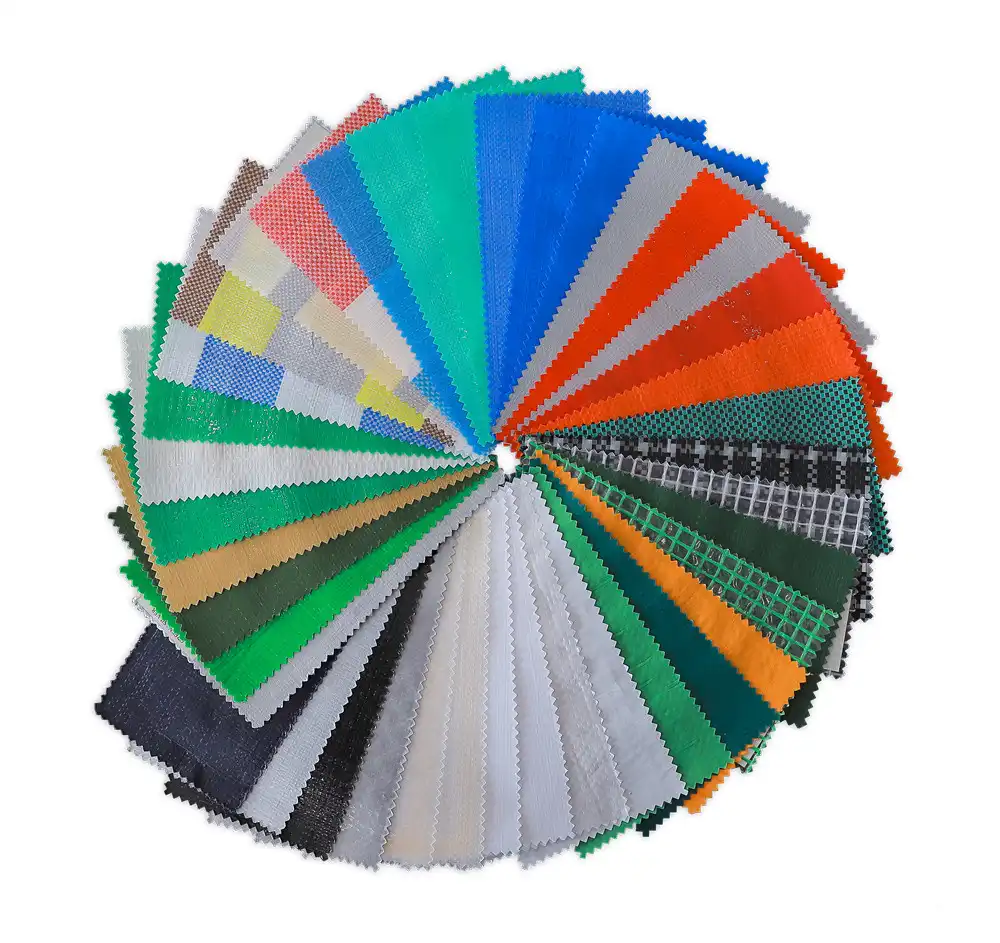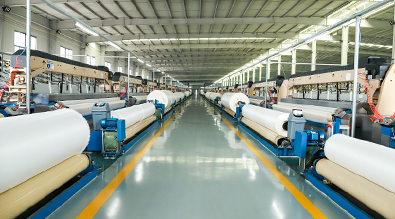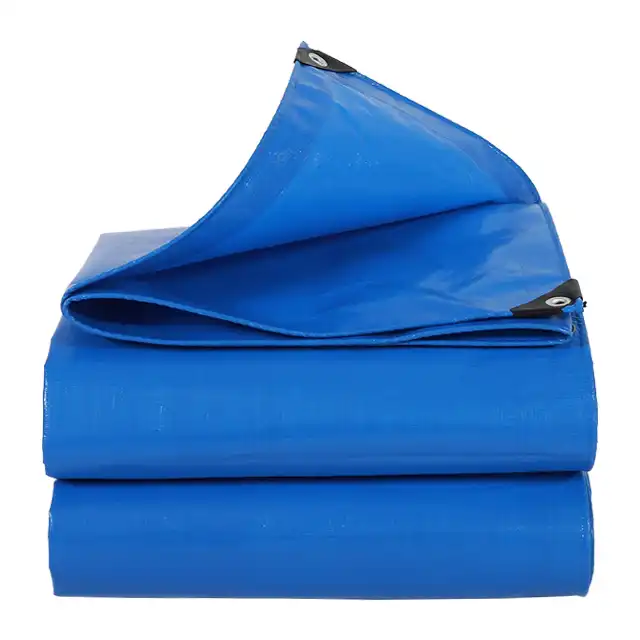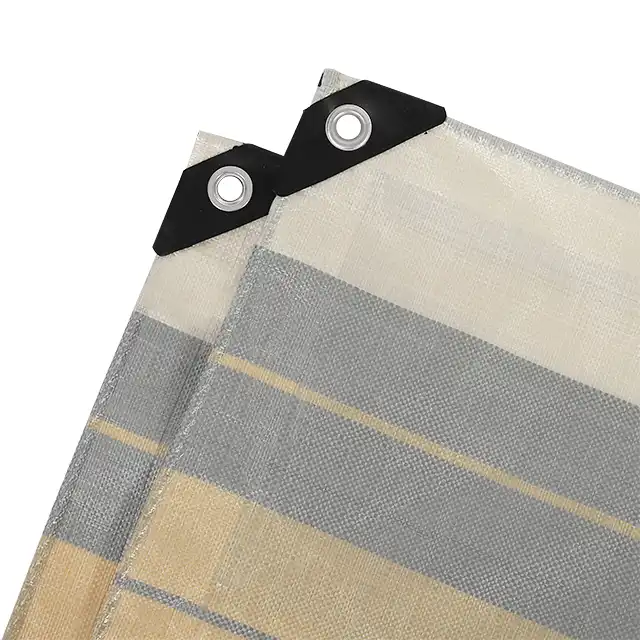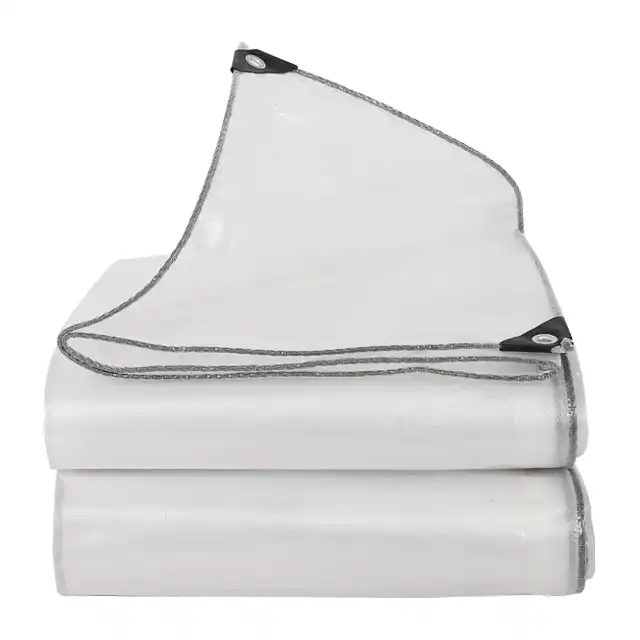The Best Practices for Storing Tarpaulins When Not in Use
Picture this scenario: you've just invested in a high-quality tarpaulin for your construction project, agricultural needs, or outdoor equipment protection. After months of reliable service, you store it away carelessly in a damp corner of your garage. When you retrieve it months later, you discover mold growth, permanent creases, and material degradation that renders your tarpaulin nearly unusable. This common nightmare situation highlights the critical importance of proper tarpaulin storage practices to maintain durability, functionality, and cost-effectiveness over time.
Essential Preparation Steps for Tarpaulin Storage
-
Thorough Cleaning and Inspection Protocol
 Before storing any tarpaulin, implementing a comprehensive cleaning and inspection routine is fundamental to preventing long-term damage. The process begins with removing all debris, dirt, leaves, and any organic material that could promote mold or mildew growth during storage. High-quality tarpaulins, particularly those made from HDPE woven fabric with LDPE coating, require specific cleaning approaches to maintain their waterproof properties and structural integrity. Start by spreading the tarpaulin flat on a clean surface and thoroughly inspect every square inch for tears, holes, or worn areas that need immediate attention. Pay special attention to stress points like grommets, reinforced corners, and areas that experienced high tension during use. When cleaning, use mild soap solutions rather than harsh chemicals that could compromise the polyethylene coating. For stubborn stains or accumulated grime, gentle scrubbing with a soft brush works effectively without damaging the tightly woven polyethylene fibers that provide the tarpaulin's strength and durability.
Before storing any tarpaulin, implementing a comprehensive cleaning and inspection routine is fundamental to preventing long-term damage. The process begins with removing all debris, dirt, leaves, and any organic material that could promote mold or mildew growth during storage. High-quality tarpaulins, particularly those made from HDPE woven fabric with LDPE coating, require specific cleaning approaches to maintain their waterproof properties and structural integrity. Start by spreading the tarpaulin flat on a clean surface and thoroughly inspect every square inch for tears, holes, or worn areas that need immediate attention. Pay special attention to stress points like grommets, reinforced corners, and areas that experienced high tension during use. When cleaning, use mild soap solutions rather than harsh chemicals that could compromise the polyethylene coating. For stubborn stains or accumulated grime, gentle scrubbing with a soft brush works effectively without damaging the tightly woven polyethylene fibers that provide the tarpaulin's strength and durability.
-
Complete Drying Requirements
Moisture is the greatest enemy of stored tarpaulins, making complete drying absolutely essential before storage. Even minimal residual moisture can lead to mildew, mold growth, and eventual material degradation that compromises the tarpaulin's effectiveness. The drying process should occur in a well-ventilated area away from direct sunlight to prevent UV damage while ensuring thorough moisture elimination. For tarpaulins with UV treatment ranging from 1% to 7%, avoid prolonged exposure to intense sunlight during the drying process, as this can accelerate the breakdown of UV protective additives. Instead, choose shaded, breezy areas that promote efficient evaporation without exposing the material to harmful radiation. Large tarpaulins may require several hours to dry completely, particularly if they feature thick coatings or multiple layers. Professional-grade tarpaulins with weights ranging from 100gsm to 280gsm typically require longer drying times due to their substantial construction and coating thickness.
Optimal Folding and Rolling Techniques for Different Tarpaulin Types
-
Strategic Folding Methods for Standard Tarpaulins
Proper folding technique significantly impacts a tarpaulin's longevity and performance characteristics. The goal is to create compact storage while minimizing stress concentration points that could lead to premature wear or permanent creasing. For medium-duty PE tarpaulins with mesh counts between 10x10 and 14x14, employ accordion-style folding that distributes stress evenly across the material. Begin by folding the tarpaulin in half lengthwise, ensuring edges align precisely to prevent uneven stress distribution. Continue with systematic folds, alternating direction with each fold to prevent permanent crease formation. The thickness of the tarpaulin, typically ranging from 7 to 12 mil, influences how tightly you can fold without causing damage. Thicker materials require larger fold radii to prevent coating cracking or fiber separation. Effective tarpaulin storage tips include varying fold lines periodically if the tarpaulin will be stored for extended periods. This practice prevents permanent creasing that can weaken the material and compromise its waterproof properties. For tarpaulins featuring tear-resistant construction and anti-corrosion properties, maintaining flexible fold patterns preserves these critical characteristics throughout the storage period.
-
Rolling Techniques for Large-Format Tarpaulins
For tarpaulins exceeding standard dimensions, particularly those with roll widths up to 5.1 meters, rolling provides superior storage benefits compared to folding. This technique eliminates sharp creases that can stress the HDPE woven fabric and potentially compromise the LDPE coating's integrity. Rolling also makes handling easier and reduces storage space requirements for large tarpaulins used in construction, agriculture, or industrial applications. Start rolling from one end, maintaining consistent tension to prevent loose areas that could develop wrinkles or stress points. Use a cylindrical core, such as a cardboard tube or PVC pipe, for tarpaulins that will be stored long-term. This core prevents the rolled tarpaulin from developing a tight inner curve that could stress the material. For tarpaulins with special features like fire prevention functionality or enhanced waterproofing, rolling preserves these characteristics better than folding. When rolling truck covers, impermeable tarps for aquaculture, or other specialized applications, consider the specific stress patterns these tarpaulins experience during use. Roll in the direction that minimizes stress on heavily loaded areas like attachment points or reinforced sections.
Creating the Ideal Storage Environment
-
Climate Control and Environmental Factors
The storage environment plays a crucial role in maintaining tarpaulin integrity during extended storage periods. Optimal conditions include consistent temperatures between 32°F and 85°F (0°C to 29°C), relative humidity levels below 60%, and protection from temperature fluctuations that can cause expansion and contraction cycles leading to material fatigue. High-quality tarpaulins manufactured with Arctic flexibility features can withstand temperature variations better than standard materials, but controlled storage conditions still extend their service life significantly. Avoid storage areas prone to extreme temperature swings, such as uninsulated attics or metal sheds, which can accelerate material degradation and reduce the effectiveness of UV treatments. Proper ventilation in the storage area prevents moisture accumulation that could compromise the tarpaulin's waterproof properties and promote biological growth. For tarpaulins featuring 100% waterproof construction, maintaining dry storage conditions preserves this critical characteristic and ensures reliable performance when the tarpaulin returns to service.
-
Protection from Physical and Chemical Hazards
Strategic storage positioning protects tarpaulins from physical damage and chemical exposure that could compromise their performance. Store tarpaulins away from sharp objects, tools, or equipment that could puncture or tear the material. Create dedicated storage areas where tarpaulins won't be disturbed by regular activity or accidentally damaged by other stored items. Chemical protection is equally important, particularly for tarpaulins used in industrial or agricultural applications. Avoid storage near fertilizers, pesticides, solvents, or other chemicals that could react with the polyethylene material or coating. Even vapors from certain chemicals can cause gradual degradation of the tarpaulin's properties. For tarpaulins with shrink-proof characteristics and highly durable construction, maintaining chemical-free storage environments preserves these engineered properties and ensures consistent performance across multiple use cycles.
Advanced Storage Solutions and Organization Systems
-
Professional Storage Infrastructure
Implementing professional-grade storage systems maximizes tarpaulin lifespan while improving accessibility and organization. Custom storage racks designed specifically for tarpaulins prevent compression damage while keeping materials readily accessible for deployment. These systems accommodate various tarpaulin sizes, from compact sheets to large truck covers and specialized applications like orchard rain covers. Consider storage solutions that allow tarpaulins to hang freely rather than being stacked or compressed. This approach prevents permanent deformation and maintains the tarpaulin's original shape and performance characteristics. For facilities managing multiple tarpaulin types, organized systems with clear labeling improve efficiency and prevent damage from unnecessary handling. Tarpaulin storage tips include professional storage infrastructure with climate monitoring systems that track temperature and humidity levels, ensuring optimal storage conditions are maintained consistently. This monitoring capability is particularly valuable for high-investment tarpaulins used in critical applications where failure could result in significant losses.
-
Inventory Management and Rotation Protocols
Effective inventory management ensures tarpaulins are used in rotation, preventing some units from remaining in storage for excessive periods while others experience heavy use. Implement first-in, first-out rotation systems that distribute wear evenly across your tarpaulin inventory and identify units requiring maintenance or replacement. Regular inspection schedules during storage help identify developing issues before they become serious problems. Monthly visual inspections can detect moisture infiltration, pest activity, or other storage-related problems that could compromise tarpaulin integrity. For critical applications, more frequent inspections ensure continuous readiness and reliability. Documentation systems tracking storage dates, inspection results, and usage history provide valuable data for optimizing storage practices and predicting replacement needs. This systematic approach maximizes return on investment while ensuring reliable tarpaulin performance when needed.
Quality Materials and Long-Term Performance Considerations
-
Material-Specific Storage Requirements
Different tarpaulin materials and constructions require tailored storage approaches to maintain their specific performance characteristics. Heavy-duty poly tarps made from high-density, tightly woven polyethylene fibers with laminated construction need storage methods that preserve their layered structure and prevent delamination. Tarpaulins featuring specialized coatings or treatments, such as fire-resistant properties or enhanced UV protection, benefit from storage conditions that preserve these engineered characteristics. Temperature stability and protection from chemical exposure become even more critical for these advanced materials that represent significant investments in specialized functionality. For tarpaulins designed for specific applications like aquaculture, where impermeability is absolutely critical, storage practices must maintain the material's barrier properties without compromise. Any degradation of these specialized characteristics could result in application failure and associated losses.
Conclusion
Proper tarpaulin storage practices directly impact material longevity, performance reliability, and overall cost-effectiveness. By implementing comprehensive cleaning protocols, appropriate folding or rolling techniques, optimal environmental conditions, and systematic organization, you can significantly extend your tarpaulin's service life while ensuring consistent performance when needed.
Cooperate with Linyi Shengde Plastic Co., Ltd.
When considering your tarpaulin storage and replacement needs, partnering with a trusted China tarpaulin manufacturer like Linyi Shengde Plastic Co., Ltd. ensures access to high-quality tarpaulin solutions designed for optimal storage and long-term performance. As a leading China tarpaulin supplier established in 2003 with over 20 years of expertise, we understand the critical importance of material quality in storage longevity.
Our China tarpaulin factory produces premium PE tarpaulins using advanced manufacturing processes including 30+ high-tech extruding machines and 400+ Korea-imported automatic water-jet looms. With partnerships including UNHCR, IOM, ICRC, and UNICEF, our reputation for delivering reliable, High Quality tarpaulin products spans over 30 countries worldwide.
Whether you need China tarpaulin wholesale solutions, competitive tarpaulin price options, or specialized tarpaulin for sale configurations, our ISO 9001:2015 certified manufacturing facility ensures consistent quality that stores better and performs longer. From standard applications to custom requirements with weights ranging from 65gsm to 280gsm, we provide comprehensive solutions that maximize your storage investment returns.
Contact us today at info@shengdetarp.com to discuss your tarpaulin requirements and discover why leading organizations trust Linyi Shengde as their preferred China tarpaulin manufacturer for quality, reliability, and value.
FAQ
Q: How often should I inspect my stored tarpaulins?
A: Inspect stored tarpaulins monthly for moisture, damage, or pest activity to catch problems early and prevent deterioration.
Q: What's the maximum safe storage temperature for PE tarpaulins?
A: Store PE tarpaulins between 32°F and 85°F (0°C to 29°C) with consistent temperatures to prevent material stress and degradation.
Q: Should I fold or roll my tarpaulin for long-term storage?
A: Roll large tarpaulins to prevent permanent creases; fold smaller ones using varied fold lines to distribute stress evenly.
Q: Can I store tarpaulins in plastic containers?
A: Use breathable storage containers or ensure complete drying before sealed storage to prevent moisture accumulation and mold growth.
References
1. "Industrial Fabric Storage and Maintenance Guidelines" by the Industrial Fabrics Association International, Technical Committee on Storage Standards
2. "Polyethylene Tarpaulin Longevity and Storage Practices" by Dr. Sarah Mitchell, Materials Science Department, Textile Research Institute
3. "Weather Protection Materials: Storage and Handling Best Practices" by the American Society for Testing and Materials, Committee D13 on Textiles
4. "Commercial Tarpaulin Maintenance and Storage Manual" by the National Association of Canvas Products Distributors, Technical Standards Division
